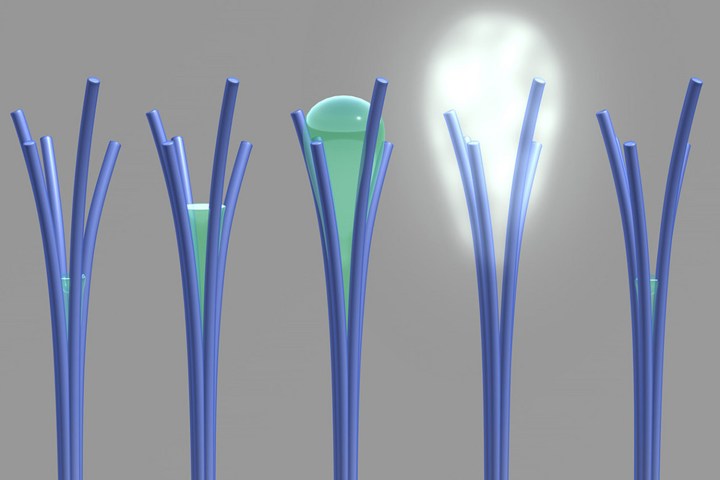
The material consists of solid, carbon-rich nanorods, which David Lao created accidentally. When Nune began to investigate the material, the nanorods lost weight with increasing humidity. He assumed the weight loss was due to an error in the vapor analysis instrument he was using, so he placed the material under a high-power microscope and took another look.
At that moment, Nune observed a phenomenon known as “solvent capitation under solve-phobic confinement,” which makes the tiny rods ooze fluid. This didn’t make sense. And maybe no one would have believed the result had the researchers not quickly hit “record” and captured a video of the event. But the phenomenon they witnessed wasn’t altogether unexpected — it was actually theorized 20 years earlier, according to PNNL.
Nune and Heldebrant published a paper on their discovery in the journal Nature Nanotechnology this month.
The video might not seem like much, but the discovery holds great real-world potential. “Now that we’ve gotten over the initial shock of this unforeseen behavior, we’re imagining the many ways it could be harnessed to improve the quality of our lives,” Heldebrant said in a PNNL news release.
Some of those ideas include water purification systems for developing countries, low-energy water harvesting for arid regions, and anti-sweat fabric that could suck up sweat and expel it as vapor.
Before the researchers get overzealous, Nune points out that they have a lot of work to do in order to manage the material and develop it for real-world applications. “Before we can put these nanorods to good use, we need to be able to control and perfect their size and shape,” he said.
One-fifth of the world’s population currently lives in regions that suffer from water scarcity, according to the United Nations. Another fifth live in areas that lack infrastructure required to transport clean water safely. And it’s only projected to get worst.
There is a great need for solutions to this global issue, and we can hope that these nanorods will be ultimately able to play a role in supplying people in need with adequate water. In the meantime, it’s vital that we plan and fund projects to solve water scarcity, one sip at a time.


